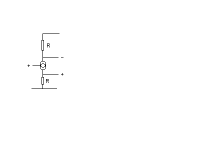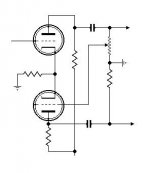Mr Cynical says:
IMO The reason that balanced interconnects have never taken off seriously in HiFi is that they would no longer be able to sell outrageously priced connectors and leads.
Consider:
The music you cherish coming off a CD or LP, has already been through at least a dozen balanced interconnects in studio, probably nickel.
How would you rank the difference one more would make?
a) A lot
b) Some small effect
c) Sweet FA
I'm for c).
In studio, we don't look at the make of the cables. It's whether they are well made, and correctly wired.
Unbalanced interconnects, properly made, in a quiet environment are OK. But the coming of switch mode power supplies, dimmers, mobile phones, made that a thing of the past.
Why on earth should thick unbalanced cables sound (generally) better than thin ones? The reason in my book, is 2 fold.
1) Better screening against sh*t.
2) Better earth bonding between chassis, thus reducing sh*t.
You can buy bigger and better unbalanced interconnects each year. Or, you can use what the professionals use.
Oh alright they're available in gold as well!😉
they're available in gold as well!😉
BUT THEY SOUND THE SAME😀
Rant over🙂 Back to normality🙂
Now wheres my RCA/Cinch/Phono......I must have put it somewhere............😱
Insomnia does strange things.........
IMO The reason that balanced interconnects have never taken off seriously in HiFi is that they would no longer be able to sell outrageously priced connectors and leads.
Consider:
The music you cherish coming off a CD or LP, has already been through at least a dozen balanced interconnects in studio, probably nickel.
How would you rank the difference one more would make?
a) A lot
b) Some small effect
c) Sweet FA
I'm for c).
In studio, we don't look at the make of the cables. It's whether they are well made, and correctly wired.
Unbalanced interconnects, properly made, in a quiet environment are OK. But the coming of switch mode power supplies, dimmers, mobile phones, made that a thing of the past.
Why on earth should thick unbalanced cables sound (generally) better than thin ones? The reason in my book, is 2 fold.
1) Better screening against sh*t.
2) Better earth bonding between chassis, thus reducing sh*t.
You can buy bigger and better unbalanced interconnects each year. Or, you can use what the professionals use.
Oh alright
 they're available in gold as well!😉
they're available in gold as well!😉 BUT THEY SOUND THE SAME😀
Rant over🙂 Back to normality🙂
Now wheres my RCA/Cinch/Phono......I must have put it somewhere............😱
Insomnia does strange things.........

John, the concept of superposition, basic to understanding the structure and workings of our Universe, has never made much of an impression in the world of Audio Mania. Stop trying to apply common sense.
Sorry SY,
It's the insomnia and the glass of whisky next to me talking🙂
But I must admit: It makes more sense than some😱
It's the insomnia and the glass of whisky next to me talking🙂
But I must admit: It makes more sense than some😱
On the isolation between digital and analog
So the idea I'm getting is a balanced phase splitter (Concertina) probably would not be that great when used in analog to analog applications but would be ideal for say inside a DAC?
On that side note, If that's true, would this type of phase splitter go before the digtal signal was converted to an analog signal?
I'd still like to hear what type of balanced output is ideal, which on kills all others?
David
So the idea I'm getting is a balanced phase splitter (Concertina) probably would not be that great when used in analog to analog applications but would be ideal for say inside a DAC?
On that side note, If that's true, would this type of phase splitter go before the digtal signal was converted to an analog signal?
I'd still like to hear what type of balanced output is ideal, which on kills all others?
David
Concertina is not the only kind of phase splitter.
What goes on "inside" a DAC is none of our concern - we can't change it.
Your other questions, I can't understand🙂
What goes on "inside" a DAC is none of our concern - we can't change it.
Your other questions, I can't understand🙂
NOT IN THE DIGITAL DOMAIN PLEASE.
Hi,
After the digital signal.
I don't know why you think the "Concertina" type of phase splitter is so ideal for the task but so be it.
Cheers,😉
Hi,
On that side note, If that's true, would this type of phase splitter go before the digtal signal was converted to an analog signal?
After the digital signal.
I don't know why you think the "Concertina" type of phase splitter is so ideal for the task but so be it.
Cheers,😉
dhaen said:Concertina is not the only kind of phase splitter.
Right. I use the old paraphase myself, with a 250k pot to set the signal pick-off point. I get both sides within <.01V, no matter how unmatched the tubes are.
What do you mean Joel?
I'm not really fixated on one type of phase splitter, but now that I think aobut it, I have been mentioning concertina too much.
What I really want is your thoughts on what you would use. If going push-pull.
David
I'm not really fixated on one type of phase splitter, but now that I think aobut it, I have been mentioning concertina too much.
What I really want is your thoughts on what you would use. If going push-pull.
David
Re: What do you mean Joel?
The standard RC-coupled "paraphase", uses two triodes. The grid resistor of the 1st triode has a tap which is tied directly to the grid of the 2nd tube. Usually, the point is determined by two fixed resistors, but I use a pot instead, and the wiper is tied to the grid, so I can move the pick-off point around. Look in the back of any RCA tube manual for an example of the (unmodified) circuit.
EternaLightWith said:What I really want is your thoughts on what you would use. If going push-pull.
The standard RC-coupled "paraphase", uses two triodes. The grid resistor of the 1st triode has a tap which is tied directly to the grid of the 2nd tube. Usually, the point is determined by two fixed resistors, but I use a pot instead, and the wiper is tied to the grid, so I can move the pick-off point around. Look in the back of any RCA tube manual for an example of the (unmodified) circuit.
Question on your schematic
Is the performance of the circuit dependant on the mu of the tubes? Would the tubes have to be matched? Would a auto bias circuit work?
David
Is the performance of the circuit dependant on the mu of the tubes? Would the tubes have to be matched? Would a auto bias circuit work?
David
Coupling
Here is a 1949 article by Frank McIntosh and Gordon Gow in which:
“the first major change in years in amplifier coupling circuit principles is discussed, together with details of the components employed.”
http://www.audiophool.cjb.net/Misc/Mac1949.pdf
Nothing new under the sun
I have a large collection of online articles/info with live links. Drop me an email if you would like a copy.
I sure am glad they dropped the "dimwit" member ranking from my name!
Cheers
Craig
Here is a 1949 article by Frank McIntosh and Gordon Gow in which:
“the first major change in years in amplifier coupling circuit principles is discussed, together with details of the components employed.”
http://www.audiophool.cjb.net/Misc/Mac1949.pdf
Nothing new under the sun
I have a large collection of online articles/info with live links. Drop me an email if you would like a copy.
I sure am glad they dropped the "dimwit" member ranking from my name!
Cheers
Craig
Re: Question on your schematic
The tubes do not need to be matched. Tube "matching" is a marketing gimmick used by retailers. But the tubes should be of the same type.
They are cathode biased. Do you understand the schematic?
EternaLightWith said:Is the performance of the circuit dependant on the mu of the tubes? Would the tubes have to be matched? Would an auto bias circuit work?
The tubes do not need to be matched. Tube "matching" is a marketing gimmick used by retailers. But the tubes should be of the same type.
They are cathode biased. Do you understand the schematic?
So it'll work if they have different cut-off voltages?😉The tubes do not need to be matched
dhaen said:So it'll work if they have different cut-off voltages?😉
Frank? Is that you?
😀 😀 😀 😀 😀 😀 😀
Well Joel, you have to admit it was a rediculous statement to post, without qualification.
I know that Frank's answers of reference and inuendo can be frustrating at times, but I see his point when it comes to answering your 1 liners.😉
Well Joel, you have to admit it was a rediculous statement to post, without qualification.
I know that Frank's answers of reference and inuendo can be frustrating at times, but I see his point when it comes to answering your 1 liners.😉
John, in all seriousness, there was nothing ridiculous about it. The triodes in the above circuit do not need to be "matched". They do need to be the same though - ie. both 6J5, or one 6SN7, 6C8, 6SC7, etc.
Matching implies there is no compensation mechanism built into the circuit. I never rely on tube condition to set the operating points of the circuit.
Matching implies there is no compensation mechanism built into the circuit. I never rely on tube condition to set the operating points of the circuit.
I think I got it
So you should always put in some kind of autobias for the two tubes so that they will "work together". This will help to later on as the tubes age.
Thanks
David
So you should always put in some kind of autobias for the two tubes so that they will "work together". This will help to later on as the tubes age.
Thanks
David
- Status
- Not open for further replies.
- Home
- Amplifiers
- Tubes / Valves
- What does coupling mean?

